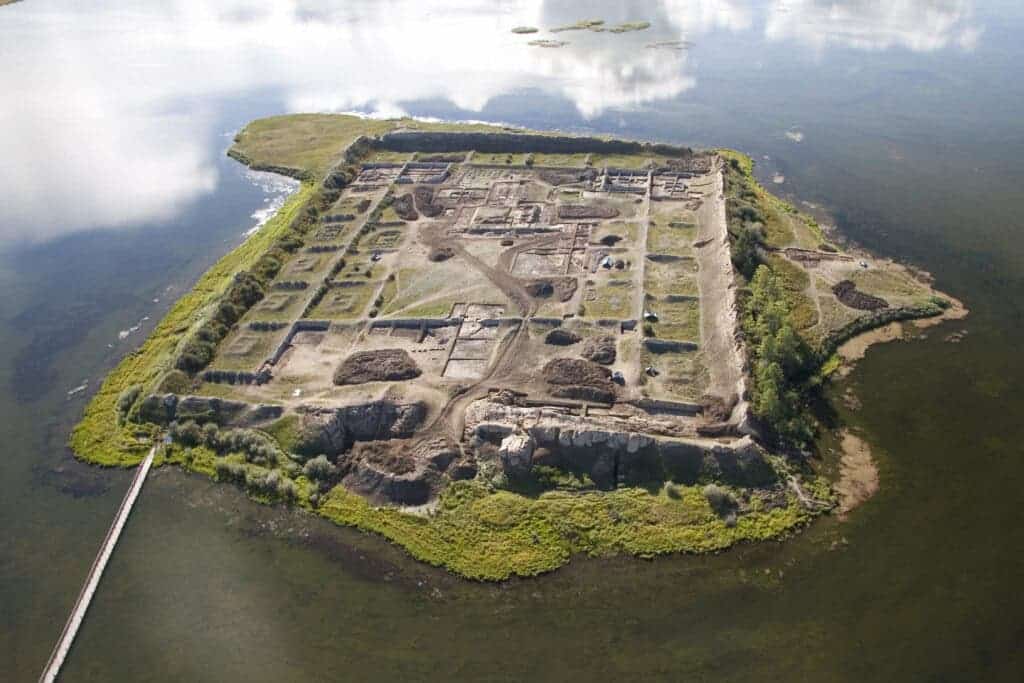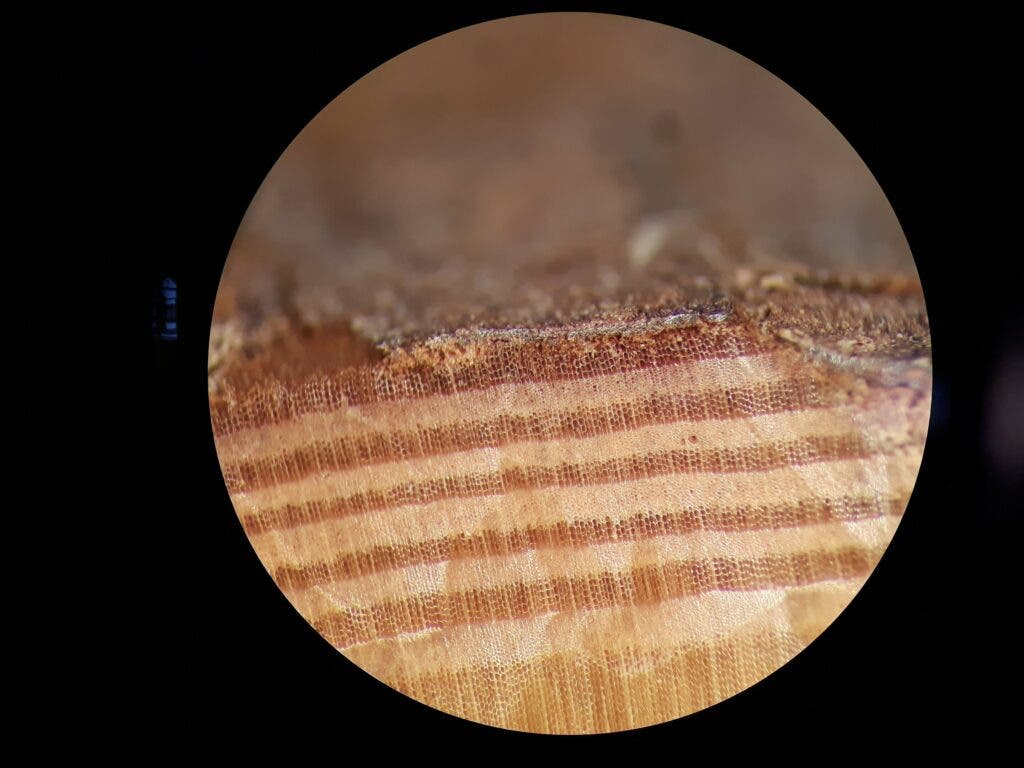If you travelled to the Tuva mountains in Southern Russia, some 1,300 m (4,300 ft) above sea level, you might find a rather inconspicuous lake called Tere-Khol, hidden among the rolling hills. The lake itself would not be very interesting were it not for an island in its midst.
In truth, the island itself is also nothing special. It’s what’s on it that’s truly spectacular: the Uyghur Por-Bajin complex.

The Por-Bajin complex was built by the Uyghurs, a Turkic minority ethnic group scattered across several areas in today’s Russia, Mongolia, and China. Por-Bajin was built more than 1,000 years ago but was abandoned for centuries until it was rediscovered in the 18th century.
The complex measures 215 x 162 meters (705 x 531 feet), with outer walls measuring 12 meters high (39 feet). Building this big of a complex — and on an island in a lake, of all places — is not an easy feat. It was known that the complex was built by nomadic Uyghurs at some point in the 8th century, but much to the archaeologists’ surprise, the complex appears to have never been used.
So why would you go to all this trouble and build this structure if you’re never gonna use it?
To get to the bottom of this, a team of researchers worked to determine the exact year when the complex was built.
“In order to understand this, the exact construction date was required to find out which local leader, or khan, gave the orders for the construction,” explains Margot Kuitems, a postdoctoral researcher at the Centre for Isotope Research at the University of Groningen.
The problem is that radiocarbon dating is only accurate to a few decades, and if you want to know exactly who ordered the construction of the complex, that’s not good enough.
So researchers had to dig deep into the bag of (science) tricks to find the exact year — and they also got a bit lucky.
Trees, carbon, and archaeology
Carbon-14 (an isotope of carbon) is created in the upper atmosphere. When plants absorb carbon dioxide during their respiration, they mostly take in Carbon-12 (which makes the vast majority of the carbon in the atmosphere). But with it, plants also absorb a tiny amount of Carbon-14.
But when the plant starts to decay and decompose, the carbon uptake is stopped, and the less-stable Carbon-14 starts to decay. So if you look at a plant today, you’ll find a specific ratio of Carbon-12/Carbon-14. But if you were to look at a plant that lived 100 years ago, you’d find a different ratio. So by looking at this ratio, you can get a good idea of the age of that plant (or other organic material).
The rate of Carbon-14 production in the atmosphere varies slightly from year to year, but this is where the researchers got a bit lucky.
In 2013, Japanese Professor Fusa Miyake found a spectacular spike in Carbon-14 content in the year 775. The spike can be detected in tree rings that grew in that year, and therefore, can be used to date the year accurately.
“When you find wood at an archeological site from that period, you can look for the spike by measuring the carbon-14 content of subsequent tree rings,” explains Kuitems.

Armed with this piece of information, the team examined a beam taken from the very foundation of the Por-Bajin complex. The tree had 45 rings, followed by bark. The 43rd ring featured the Carbon-14 spike, so that was the year 775 — which means the tree was cut 2 years later, in 777.
“So, we knew the tree was felled in 777. Tree ring specialist and co-author Petra Doeve determined that the final, partial ring was created in the spring,” adds Kuitems.
Russian archaeologists had already determined that the complex was built quickly, in 1-2 years, so the date probably stands true for the entire structure.
So what does this tell us?
In the year 777, Tengri Bögü Khan was the leading khan. He is famous for converting to Manichaeism, a religion spread by a Persian prophet based on a good-evil duality. Manichaeism had some success in some areas, but unfortunately for Bögü Khan, most of his people opposed it. He was actually killed in an anti-Manichaean rebellion in 779. Here too, the researchers got a bit lucky, because this particular event was a smoking gun indicating what really happened to this impressive complex.
“All this ties in neatly with the archeological evidence,” explains Kuitems. It is likely that the complex was built to serve as a Manichaean monastery. “This explains why it was never used after the anti-Manichaeans defeated Bögü Khan. If it had been a palace or a fortress, it is more likely that the victors would have moved in.”
So this approach helped researchers solve a long-standing conundrum, and could be used in other settings, researchers argue.
“This technology can be really useful in cases where an exact date is required,” researchers conclude.
Today, there are over 10,000,000 Uyghurs, spread over the geographical territory of several countries. Notably, over 1 million Uyghurs (up to 3 million, by some estimates) are said to be detained in concentration camps in Xianjiang, China.
Journal Reference: Margot Kuitems el al., “Radiocarbon-based approach capable of subannual precision resolves the origins of the site of Por-Bajin,” PNAS (2020). www.pnas.org/cgi/doi/10.1073/pnas.1921301117









